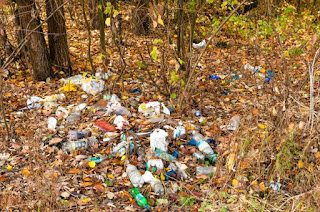|
G |
rowing food
at home is becoming more and more popular. This is because there is a growing
awareness among consumers about food and its relationship to human health and
environmental wellbeing. Hence most people now want food that are grown without
chemicals that are harmful to their health and the environment, they want food
that are fresh and nutritious and they want food that are packaged without
misleading and deceptive labels. In a world where population growth is constantly
on the increase, finding growers and companies that satisfy the above demands is
a tall order. As a result more people are opting to grow their own food at
home.
Home gardens
involve utilizing the space around a house to grow food particularly vegetables
and fruits. Incorporating food crops such as yam, beans or cassava is possible
but their production is limited.
Growing food at home eliminates the need to travel long distances to get
food, it reduces food miles, which is the distance food travels from farm to
table. Foods with short food miles have been proven to retain about 95% of
their nutritional and edible values. What’s more? Growing food at home
beautifies the home landscape and guarantees that nothing injurious to health
is ingested.
GETTING STARTED
Starting a home garden can be intimidating, especially for those without much gardening experience. Preparing land and plots can take a lot of time and hard work, but, once established, home gardens can flourish with minimal labor or inputs.
Careful planning is important for a successful home garden. There are a number of factors to consider:
1. Space
The amount of space around a house will determine what techniques can be used and how many vegetables and other food crops can be produced. It is important to note that it no longer matters whether the land in your house has soil or not, what really matters is space. Houses with small space or concrete floors can build home gardens.
With careful planning, a garden can maximize the efficient use of every
available space by deploying
innovative technologies used for growing in small spaces. For example, vertical
garden, container garden, hydroponics etc.
2. Style
of Garden
Before
you start a home garden think through on the kind of garden that will suit your
person. Just because you saw a garden somewhere that you love does not mean
that it will suit you. When designing a home garden you need to decide how much
time you will want to spend working in the garden daily or weekly, what you
would prefer to grow, the scale of production – whether it will be subsistence,
commercial or both. These will determine the size and layout of the garden and
the features you will put in place. I will suggest you visit other home gardens
to look at their design, structure and materials used to see what you can
incorporate into your style.
3. Site Assessment
When starting a new garden or revamping an existing garden, it pays to your take time to familiarize yourself with the site. The fact that it is where you live does not mean you are familiar with some important factors that will
contribute to the success of a home garden. Here are some
factors to put into consideration when assessing your site:
·
Observe the soil
structure and the existing vegetation for vital clues about soil condition and
fertility. Is the vegetation on it healthy? Does it remain dry or soggy after
rain? Is it free of debris and stones?
·
Observe the position of sunlight throughout
the day. Most plants require full sunlight to grow;
vegetables need at least 5 – 6 hours of sunlight per day. However, some
vegetables and crops like some shade. Identify the hot spots and cool areas.
The hot areas may require some trees for shading and cooling the garden during
the hot season. Take note of the prevailing wind direction to see what will be
suitable to act as windbreaks. Take note of these features.
·
Watch out for cables, pipes and
drains and take note of where they are. You don’t want to plant where an
underground cable or water pipe is laid just in case you need access to them
some day.
4. Trees and Competition
While trees are good for shade and moisture retention, they require a lot of water and can rob the garden vegetables of vital moisture and nutrients.
You may therefore consider other forms of shading or plant
trees away from your vegetable plot but where they can still provide some
shade.
5. Access to Water
While the techniques used in homestead
gardening are designed to enhance moisture retention in the soil, water is
still a vital ingredient of any garden. Plants need to be watered regularly,
especially in dry areas. Therefore, access to water must be considered when
planning a homestead garden.
6. Household Labor Capacity
Building
and maintaining a home garden requires a lot of work. While many of the
technologies and techniques used for urban gardening today save time and
labour, it is appropriate for an intending home gardener to identify how they
will maintain their garden before starting.
By
planning ahead, home gardeners can better utilize the limited space around a
house and maximize the production of vegetables and other food crops. The
layout of the garden is especially important.































